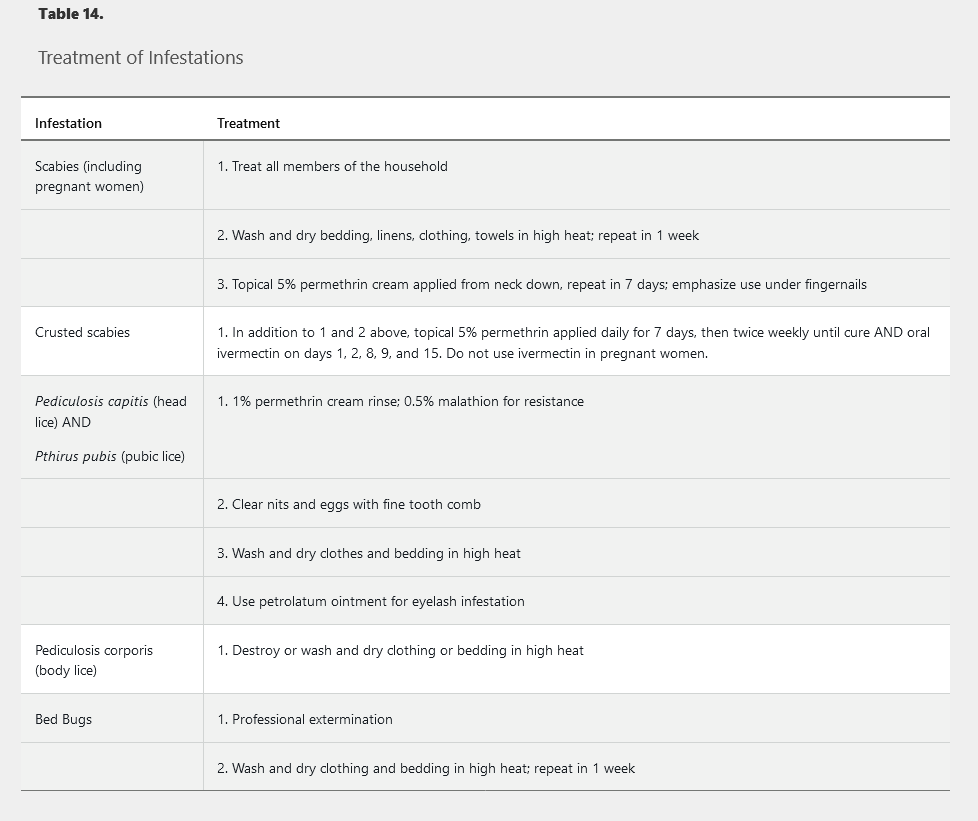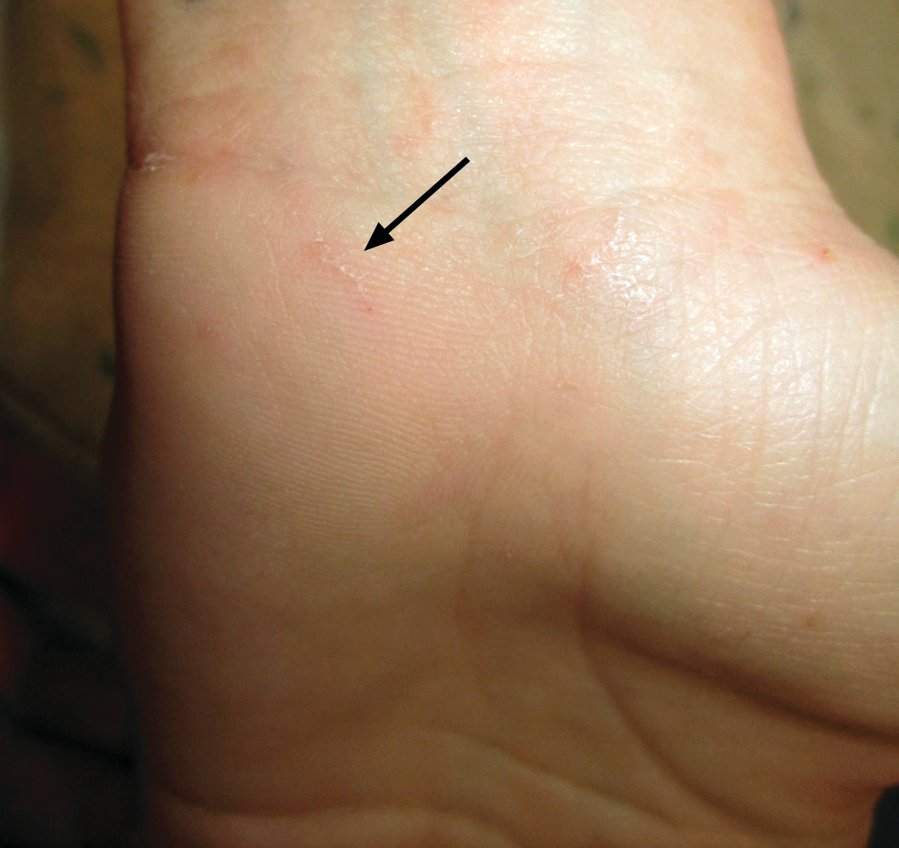Infestations
- related: Dermatology
- tags: #dermatology
Scabies
Scabies (Sarcoptes scabiei) infestation is characterized by intensely pruritic, crusted papules, nodules, and burrows that develop in the interdigital spaces, wrists, ankles, breasts, periumbilical area, and genitals (Figure 56). In older adults, the immunocompromised, or Down syndrome patients, highly contagious crusted (Norwegian) scabies occurs with extensive thick concrete-like scale. Scabies is transmitted by close personal contact, and diagnosis is performed by microscopic identification of the mites, eggs, or feces from skin scrapings prepared with mineral oil (Figure 57). See Table 14 for treatment. Pruritus may persist for weeks after eradication of scabies and does not necessarily represent resistance or reinfection. “Postscabetic pruritus” can be treated with antihistamines, topical glucocorticoids, and, if severe, oral glucocorticoids can be used.
Topical application of permethrin 5% cream is a first-line therapy. The cream is applied overnight to the entire body surface from neck to toes, including genitals and under fingernails. The lotion is removed by showering or bathing 8 to 14 hours following application. Repeat treatment in 7 to 10 days is usually recommended. Clothing, linens, and anything that has had contact with skin within the preceding 1 to 2 weeks must be thoroughly washed.

 A burrow is present on the proximal hypothenar eminence. Scrapings of the black dot at the lower end of the burrow revealed the mite pictured in Figure 57.
A burrow is present on the proximal hypothenar eminence. Scrapings of the black dot at the lower end of the burrow revealed the mite pictured in Figure 57.
Lice
There are three types of lice that infest humans: head (Pediculus humanus capitis), body (Pediculus humanus corporis), and pubic lice (Pthirus pubis). Head lice live on the scalp and attach eggs (nits) to the proximal hair shaft (Figure 58). Transmission occurs by close personal contact or by fomites such as bedding, clothing, or hairbrushes.
Body lice live in the seams of clothing and not on the skin. Excoriations result in crusted papules or linear petechiae on the trunk, neck, and proximal arms. Maculae ceruleae are blue-brown macules from subcutaneous hemorrhage at sites of feeding.
Pubic lice (crab louse) are typically spread by sexual contact but may attach to other sites such as eyebrows or eyelashes (Pediculosis ciliaris). Symptoms include itching in affected area and maculae ceruleae. See Table 14 for treatment.
Bed Bugs
Relaxed international travel and pesticide regulations have led to the resurgence of the bed bug (Cimex lectularius). Bed bugs live in floorboards, walls, vents, or furniture and crawl to the host to feed overnight. They do not live on the human body. Bites are characteristically linearly arranged urticarial papules (“breakfast, lunch, and dinner” bites) on exposed skin (Figure 59). See Table 14 for treatment.